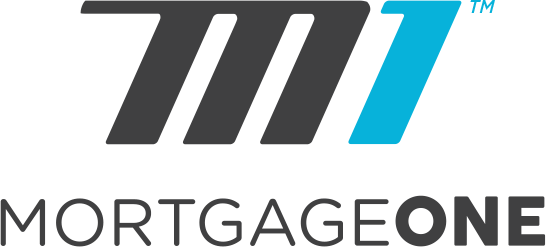Fluctuations in mortgage rates can significantly impact the housing market. Recently, there has been a…
Credit Score Basics
CREDIT SCORE BASICS
Credit scores are required on most mortgage loans…in fact over 90% of all U.S. lenders use FICO credit scores when making lending decisions. The classic FICO credit score is produced from software developed by Fair Isaac Corporation and is available from the three major credit repositories. (Experian, Equifax and TransUnion). Each repository or credit bureaus captures, updates and stores credit histories on most U.S. consumers. Each repository brands their FICO score under a different name. Experian’s is called Fair Isaac Risk Model V2SM, the Equifax brand is called Beacon and TransUnion uses FICO Risk Score.
To a lender, your FICO credit score equals the risk of doing your loan. The lower the score, the higher the risk of default. The higher the score, the lower the risk of default. Credit scoring is a predictive model of how you will or will not make payments on time in the future based on your past habits.
Most mortgage loans require the lender to request FICO credit scores for EACH borrower from EACH of the three major credit repositories when they order what is called a three in-file merged credit report. If the borrower’s credit file includes complete and accurate information to calculate the credit scores, the lender does not need to further evaluate the borrower’s creditworthiness. The development of the FICO score has greatly streamlined the credit evaluation process as it has been updated over the past 25 years. Likewise, it means that credit is evaluated the same across all borrowers, reducing bias and discrimination.
In most cases, the lender must use the lowest middle score of the all of the borrowers on the loan file. If all of the bureaus use the same model, why would a lender have to pull from each bureau and take the lowest middle score of all borrowers?
1. Credit date varies at each credit repository. Some creditors report to only one or two of the repositories as this is their choice.
2. Creditors may report at different times to different repositories, thus one will have more up-to-date information.
3. Each repository uses the same FICO scoring model but there are variations on how each repository sees the 30-40 score factors that affect your credit score differently. For example, the score factor “too many revolving balances” could carry a weight of 10 points with one bureau but 13 points at a different bureau.
FICO credit scores range from 300-850. Remember the higher the better. Most Conventional loans require a minimum of a 620 FICO score. FHA loans have more flexibility and allow FICO scores down to 580 to qualify for the 3.5% down payment. Lenders may or may not have “overlays” where they have decided they don’t want to take the risk of going that low.
WHY DOES MY CREDIT SCORE MATTER IF I AM ABOVE THE MINIMUM?
The higher your credit score, the more confidence the lender has you will pay back the mortgage loan they are giving you. They are taking less risk and therefore will give you lower interest rates. Below is a table from Oct 2016 that defines the average APR based upon credit scores.
FICO SCORE APR
760-850 3.179%
700-759 3.401%
680-699 3.578%
660-679 3.792%
640-659 4.222%
620-639 4.768%
As you would expect, a small increase in the interest rate, even tenths of a percent, can increase interest payments over time by thousands of dollars. Assuming you are seeking a $300,000 loan amount: The difference between monthly payments at 760 FICO vs 639 FICO is approximately $273. Over 30 years (360 payments), that amounts to $98,280 dollars!!!
Managing your credit score is one of the most important things you will do to create wealth!
WHAT GOES INTO YOUR FICO CREDIT SCORE?
Although there are many different pieces of credit data on your credit report that are used in scoring…there are 5 key ingredients or categories that your FICO scores consider
How Your Credit Score is Calculated?
Payment History Outstanding Balances Length of Credit History
TYPES OF CREDIT USED NUMBER OF INQUIRIES
35% – PAYMENT HISTORY
This indicates if you have made your payments on time to creditors and has the biggest impact on your score. The more severe, recent and frequent the late payment information, the greater the impact on a FICO score. Payment histories are reviewed on credit cards, retail store accounts, installment loans like car payments, finance company accounts, mortgage loans. They also review Bankruptcies, foreclosures etc.
Fair Isaac describes “High Achievers” on their credit scores. They have no late payments, have no collections or public records
30% – OUTSTANDING BALANCES OR AMT OF DEBT
This represents how much you owe versus how much available credit you have and how many accounts there are with balances. You should strive to keep your balances on revolving credit as low as possible and have.
High Achievers: Average revolving credit utilization rate is less than 6%. Have only three accounts with a balance and owe less than $3,000 on all revolving accounts.
15% – LENGTH OF CREDIT HISTORY
The longer your accounts are open, the better. A lot of people think that they should close unused credit lines, but if you close your oldest credit line, it may negatively impact your score.
High Achievers: Have an average age of accounts of 11 or more years. Age of oldest account is 25 years old on average.
10% – TYPES OF CREDIT USED
You should have both secured and unsecured credit to reflect a diverse mix of credit. A mix of credit cards, auto loans, and mortgages paints a more positive picture than just credit cards alone.
10% – NUMBER OF INQUIRIES
Frequently applying for credit can look like desperation to lenders. This section will show how many inquiries made in a six-month period.
High Achievers: Opened their most recent account 2.5 years ago. No new credit in past year.
Requesting a Copy of Your Credit Report
Did you know that there are ways to get your credit score for free?
Federal regulations give you the right to one free copy of your credit report every year. Additionally, you are also entitled to a free copy if you are denied credit. Take advantage of these freebies.
You can obtain your credit report from annualcreditreport.com. Other websites may charge a fee or invite you to join credit monitoring services that offer a free trial. It is truly free. There are links to other services but there is no charge for your credit report. Please note that the free report does not include a credit score.
________________________________________
How to Check Your Credit Report
STEP 1:
Go to annualcreditreport.com
STEP 2:
Click on “Request yours now!” or “Request your free credit reports” to start the process.
STEP 3:
Complete the online form.
STEP 4:
Check the box for which report you would like to request.
STEP 5:
Answer some personal questions. The info is used for security purposes.
STEP 6:
Write down your report number or print the report.
STEP 7:
Review your report to ensure accuracy.
STEP 8:
Contact the credit information issuer to dispute any inaccuracies. You can also file a dispute through the credit reporting agencies.
________________________________________
You should receive a response from the CRA within 30 to 45 days. If the error has been corrected, they will send you a fresh copy of your credit report at no charge to show you that the item has been removed. They will also send a corrected report to any entity that received a report that contained errors within the last six months.
If you cannot have a disputed item removed, you have the right to include your side of the story on the credit report. Your statement should be a concise explanation (100 words or less) as to why you are challenging the item in question. From that point on, this notation will be included in your credit report as long as the item in question remains on your report.
Disputing Errors and Credit Remediation
If you find that you have errors on your credit report, follow this procedure to correct those errors.
• Make a copy of the report and circle the item(s) you are questioning. Keep the original copy for your records.
• Prepare a letter to the Credit Reporting Agency (CRA) that provided you with the report in question, and request to have the erroneous item(s) removed. If you have proof of payment for an item in question, include a copy of that documentation.
• Prepare a letter to the creditor reporting the problem, especially if you feel you are a victim of fraud or identity theft. Inform the creditor that you are disputing an error reported to the CRA, state why the claim is inaccurate, and include any relevant documentation to prove your point.
• Send your correspondence via certified mail.
________________________________________
You should receive a response from the CRA within 30 to 45 days. If the error has been corrected, they will send you a fresh copy of your credit report at no charge to show you that the item has been removed. They will also send a corrected report to any entity that received a report that contained errors within the last six months.
If you cannot have a disputed item removed, you have the right to include your side of the story on the credit report. Your statement should be a concise explanation (100 words or less) as to why you are challenging the item in question. From that point on, this notation will be included in your credit report as long as the item in question remains on your report.
There are services available to help you with your credit.
If you would like to work with a credit repair service instead of trying to tackle credit issues on your own, we can help you get started. We will do our best to refer you to a reputable credit remediation service. We will also review your credit report with you and help guide you in the right direction to improving your overall credit picture.
Overcoming Credit Issues
Let’s say that your credit score just isn’t where it needs to be to get you a loan or the kind of rate you were hoping for. It’s a tough situation to be in, but with some hard work and patience, you can improve things and try again.
What can you do to improve your credit?
• Be aware of your credit habits.
• Pay down balances.
• Don’t close out older, seasoned accounts. The age of a credit account impacts your credit score. Longevity is a good thing.
• Request a credit report annually and dispute items that don’t seem right.
• Pay your debt on time.
• Distribute debt over your revolving accounts. This means that if you have one credit card that is at its limit, but have two others that haven’t been used, transfer some of the balance of the maxed-out card to the other two cards. This will evenly distribute your debt and change your ratio of available credit versus debt.
• Keep accounts active. If you have a couple of credit cards for emergencies, try to make at least one small purchase on the cards a few times a year to keep them active. If you don’t use a card for six months or more, it won’t show up on your report and may impact your credit score.
• Limit the number of credit cards or revolving credit cards (department stores) to 3-5 cards. Keep your debt manageable.
________________________________________
Reap the rewards of having a good credit score.
If your biggest issue is that you just don’t have enough credit to get a loan, start by opening small lines of credit that report to at least one of the major credit reporting agencies (Equifax, Experian, TransUnion). Then, make small purchases and pay them off. Establish a checking and/or savings account. Ask your bank or credit union about credit cards they offer to help you build credit. Some offer low-balance secured credit cards that require you to put down a deposit and build credit over time.
You do have some control over your credit and can earn the benefits of having a good credit score. Contact us if you have any questions or need some help getting started.



